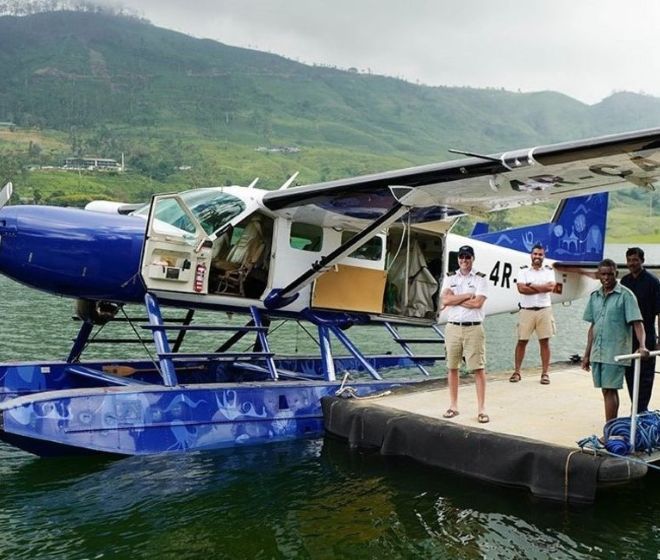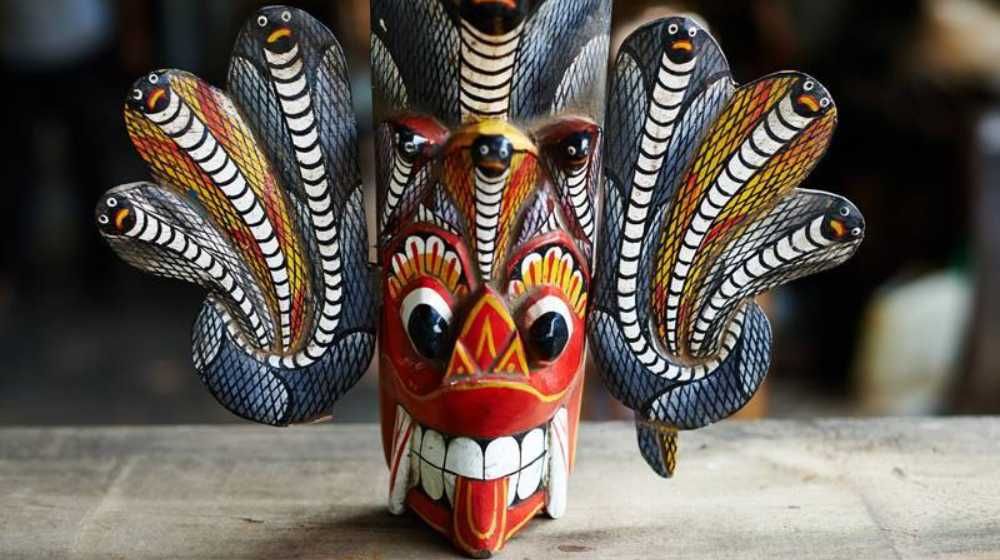
Sri Lanka Mask Industry
At a time when the people worshipped trees and animals, masks were an indispensable part of Sri Lankan rituals and ceremonies. Now centuries later they are more of an interesting oddity. However, the traditional mask industry is still a thriving business that continues to fascinate both locals and tourists alike. With their colourful facades, odd shapes and intriguing histories, traditional Sri Lankan masks are commonly found adorning the walls of local houses. They also make excellent souvenirs. All masks have grotesque features that make them all the more interesting. Most masks feature gaping, misshapen mouths; sinister, bulging eyes; and bright, vivid colours. The local masks can be divided into several categories depending on their uses.
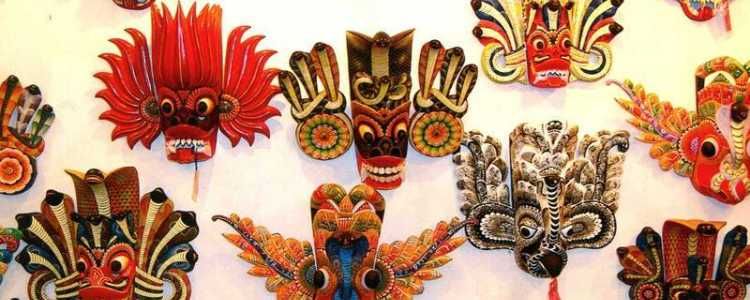
Some masks are used during ancestor worship, certain spiritual rituals and healing ceremonies. There are masks that are related to hunting, fertility and even exorcism. The exorcism masks are used during funerals and a ritual known as the tovil. Such ceremonies are still held in certain parts of the island and can be quite interesting to watch. Currently, the art of mask making is concentrated among a few families who reside in Ambalangoda, Wathugedara and Benthara as well as some parts along the Western coast. This craftsmanship has been passed from generations within the same families and has been a family trade since its introduction. The timber that is used to make these decorative and colourful masterpieces should always be light and durable and therefore trees such as “Rukkattana” and “Diyakanduru” are used. There are different types of mask categories that are used in Sri Lanka which includes.
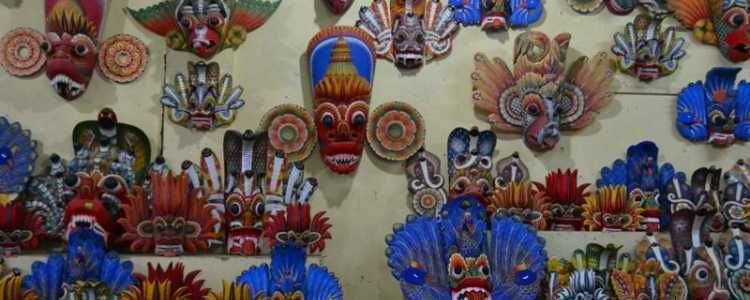
Raksha Mask – Used to perform Raksha dances in KolamMaduwa. According to ancient chronicles, Sri Lanka was earlier ruled by a race of Rakshasas (devils) whose king was Ravana of the legend Ramayana. These Rakshasas were able to assume various forms which now the masks depict. There are 24 forms of Rakshasas but only a few are performed in Kolam dance. These masks include the cobra mask, the mask of a bird and the mask of the demon of death.
Sanni Mask – These are used to treat illnesses while there are 18 sanni masks in use.
Kolam Mask– This type is used mainly in dramas while popular kolam masks are Lenchina and Jasaya.
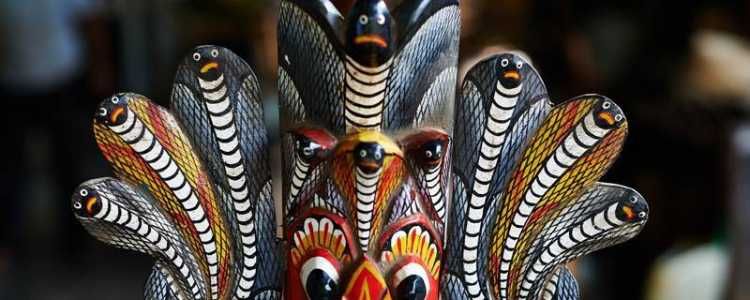
The Mask Museum in Ambalangoda is another attraction for those who are interested in this.
This is a privately owned museum which is run by a well known family in Ambalangoda and is located along the Colombo – Galle main coastal road on the seaside. The entire location consists of a mask museum, a mask making workshop and a mask showroom. The museum is quite educative with a number of exhibits being available which are related to traditional and ancient Sri Lankan mask making with brief descriptions about each item. All masks that are on display and for sale have been patiently hand carved with very intricate designs and painted in vibrant colours which depicts the traditional inheritance that have been passed on along the years.

